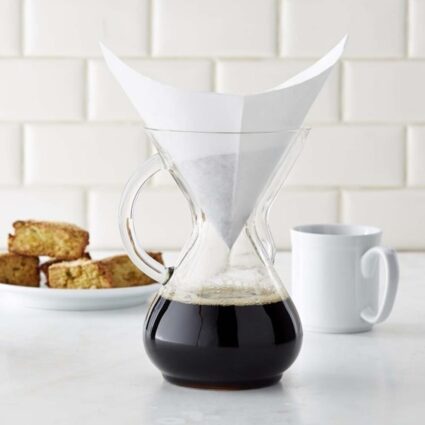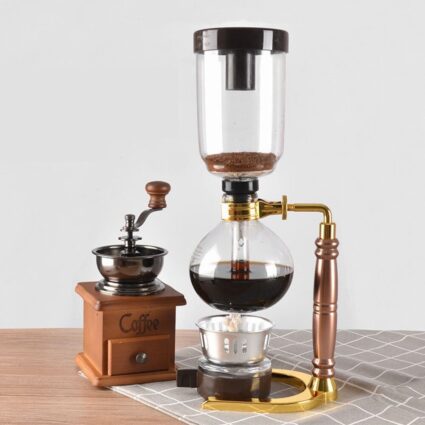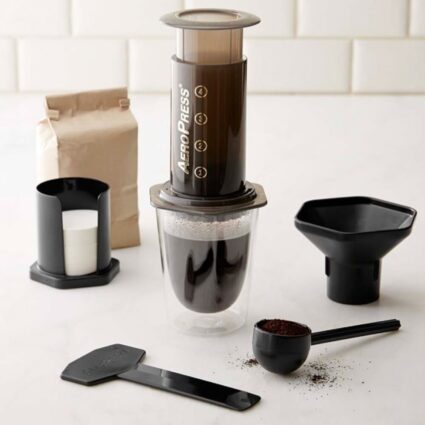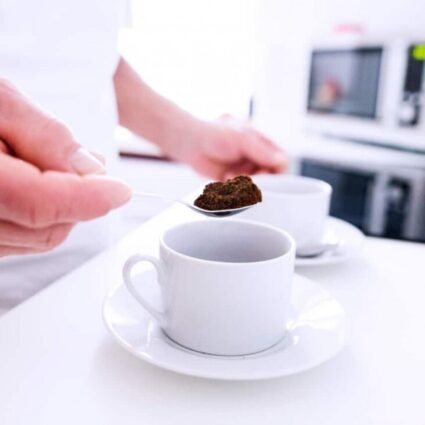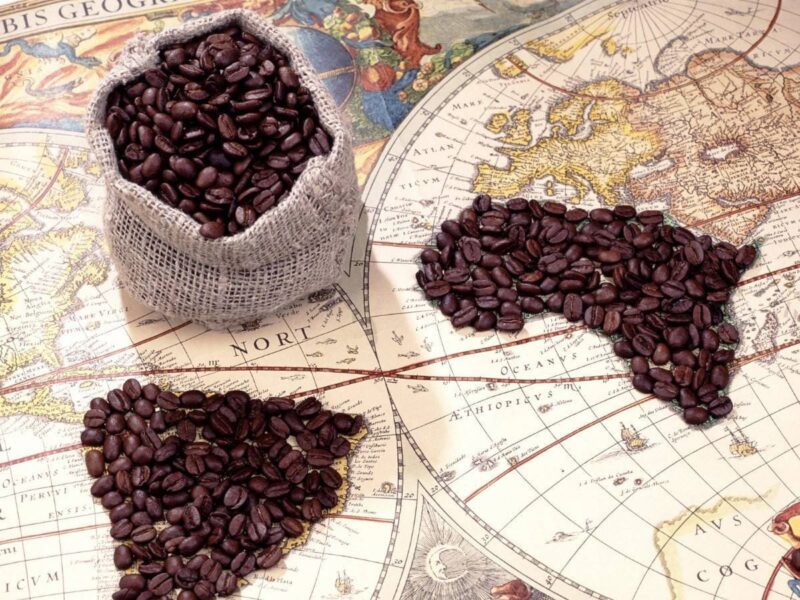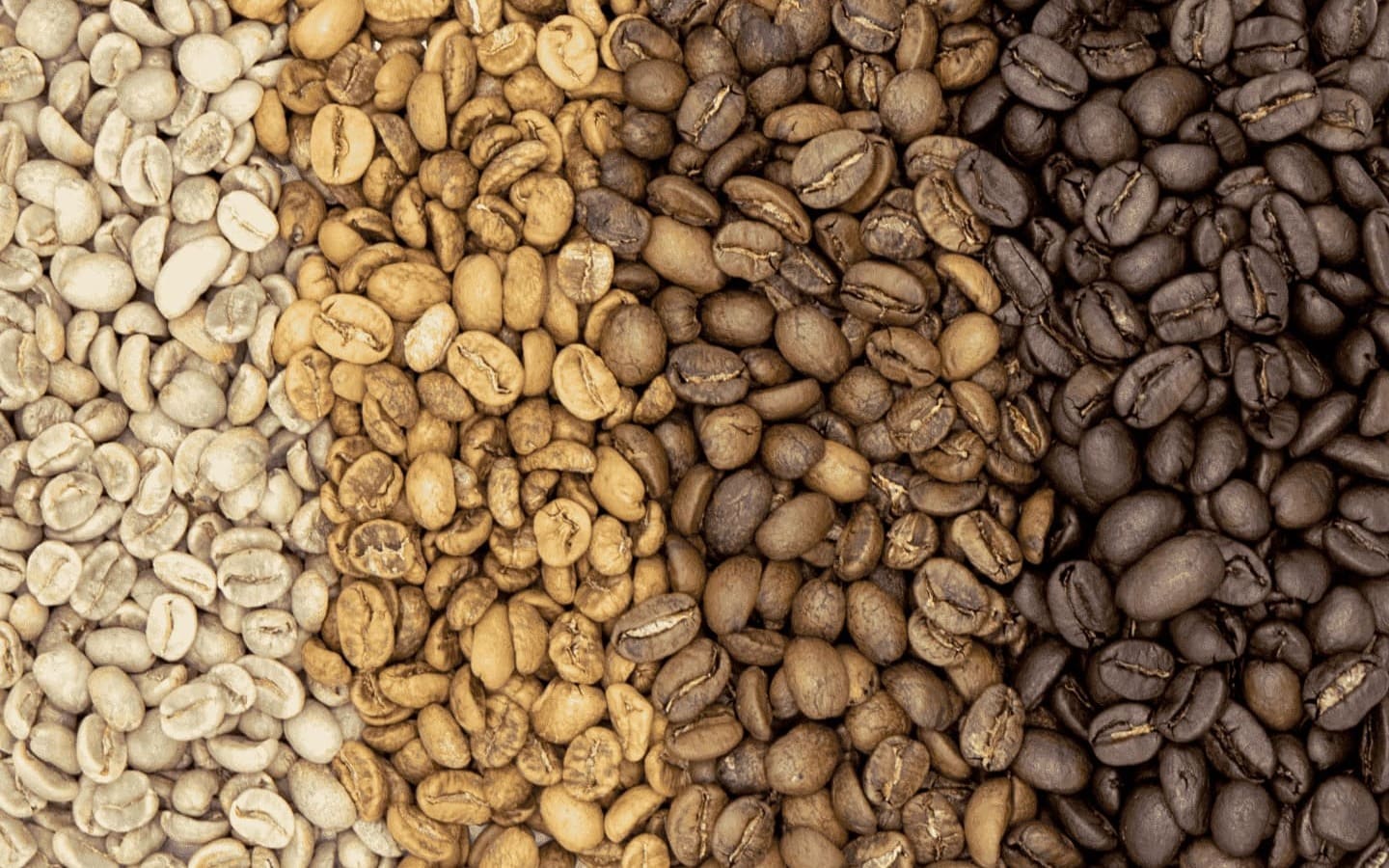The life cycle of coffee is conventionally divided into 5 (five) stages. They are: Coffee Growing, Coffee Processing, Coffee Roasting, Coffee Preparation and the Coffee Drinking Process itself. Thus, the coffee bean travels a long and complicated path from the tree to our cup. It should be noted that each of the aforementioned stages has its own importance for achieving the desired final result. And yet, the greatest focus is on the Coffee Roasting process, because it is extremely complicated by its nature, requiring a wealth of knowledge and experience. The point is that there are a number of organic compounds in coffee beans, which during heat treatment successively begin to enter into various chemical reactions, providing the taste, aroma and color of coffee so familiar and pleasant to us.
Still unroasted coffee beans arrive at the Roastery in 60 (sixty) kilogram bags. Due to the protective silver layer, the coffee is light gray and is called White Coffee. Before the actual roasting process, the coffee passes through special machines, thanks to which it is deprived of that protective bran layer, becoming the well-known Green Coffee, washed and dried.
Coffee roasting is a complex science with a number of unknowns, but the roasting process can be simplified into 5 (five) stages. They are:
Maillard Reaction: During this stage, the color of the coffee changes from green to light brown. At 150-200 degrees Celsius, the amino acids present in coffee beans enter into a chemical reaction with reducing sugars, forming the outline of the subsequent taste and aroma of coffee. At this stage, the coffee is not yet ready to drink, but is only in the PreRoasted state.
Caramelization: At this stage, at a temperature of 170-200 degrees Celsius, the sugars in the coffee bean turn into caramel, giving the coffee a light brown color and sweetening it. By controlling the duration of this phase, they get a balance of sweet and sour flavors. Light Roast Coffees are obtained at this stage (Light Roast, Cinnamon Roast, Scandinavian Roast).
First Crack: At 205 degrees Celsius, the residual moisture in the coffee beans evaporates causing cracks in the coffee beans. Hence the name of the stage. It is noteworthy that cracks are also heard during the process. Coffee beans lose about 5 percent of their weight and the volume of the beans doubles (like a popcorn). As a result of this stage, Medium Roast Coffee (Medium Roast, City Roast, Vienna Roast) is obtained.
Pyrolysis: Then, at a temperature of approximately 220 degrees Celsius, another chemical reaction begins to take place in the coffee beans, separating carbon dioxide and oil compounds. The grains again lose part of their mass, about 13 percent. As a result, the acidity gradually decreases, giving way to sweetness. An almost proportional balance is obtained. The coffee obtained at this stage is Medium-Dark Roast (Medium-Dark Roast, Full City Roast, French Roast).
Second Crack: Finally, under the temperature of 225-230 degrees Celsius, the cellulose in the coffee beans begins to break down, causing the coffee beans to crack a second time. At this stage, the characteric bitter taste and ash smell of coffee is finally formed. The coffee obtained at this stage is called Dark Roast (Dark Roast, Espresso Roast, Italian Roast).
Summarizing what was told above , it should be noted that when going from weak to strong roasting, the flavor profile of coffee changes from sour to bitter, with the presence of pronounced sweetness at medium roasting. From the point of view of aroma, moving from weak to medium to strong roast, the coffee is obtained with floral, fruity and charcoal notes respectively. For example, to get coffee with pronounced sweetness and fruity notes, it is desirable to choose dry-processed coffee beans and roast them at Medium Roast.
So, what is your preferred level of Roasting?













